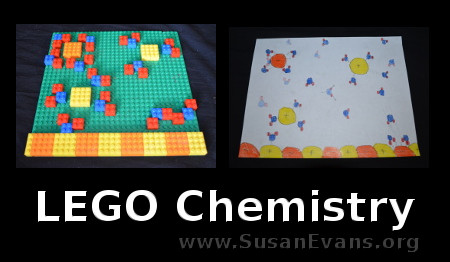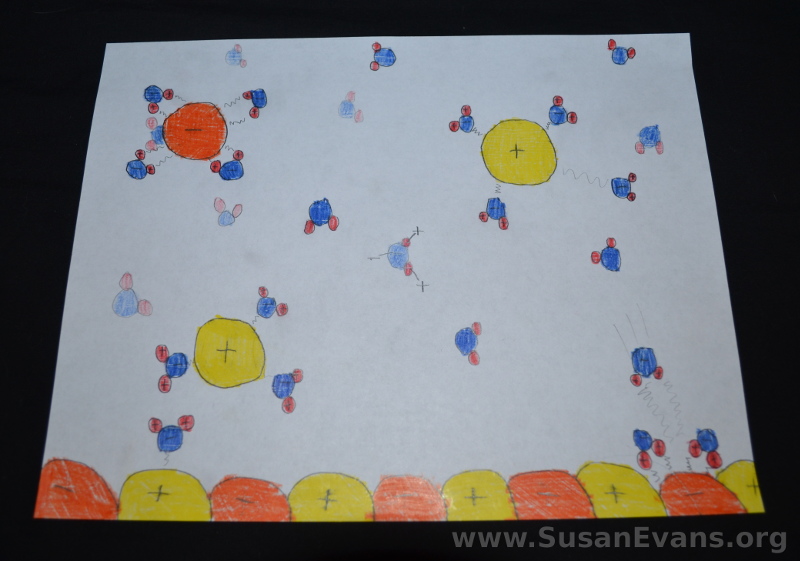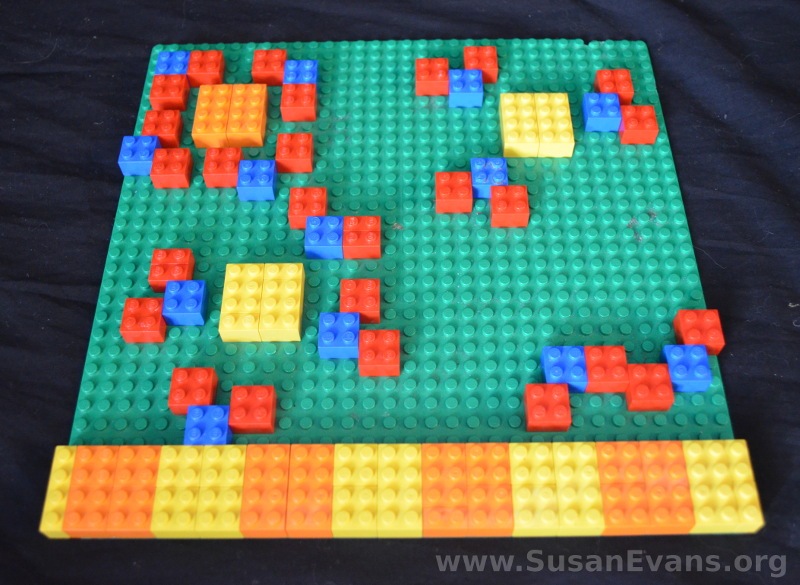My son illustrated how water dissolves salt in a solution, performing LEGO chemistry! He started with a square green base. He placed yellow and orange LEGOs on the bottom, representing Na and Cl. The Na (sodium ion) is positively charged, and the Cl (chloride ion) is negatively charged.
When placed in water, the water has a polar covalent bond, meaning that the water molecules are slightly charged. This is because the Oxygen pulls harder on the shared Hydrogen electrons, making the Oxygen side negatively charged. The two smaller Hydrogens are slightly positively charged because their electrons are being hogged by the Oxygen most of the time.
When the table salt (NaCl) is placed into water (H20), the positively-charged Sodium atom is attracted to the negatively-charged Oxygen atom, pulling the Sodium away from the Chloride. In the same way, the negatively-charged Chloride ion is attracted to the positive end of the water molecule (the two Hydrogen atoms).
The water is dissolving the salt by breaking the Na apart from the Cl in this way. The small blue LEGOs are Oxygen atoms, and the red LEGOs are Hydrogen atoms. (In reality, he should have used tiny single LEGOs for the Hydrogen atoms, because they are way smaller than Oxygen atoms are!)
And there you have it: LEGO Chemistry! If you did not understand my explanation, perhaps this video will help to clear things up:
How Water Dissolves Salt
Why not join the Unit Study Treasure Vault and watch the 24 high school chemistry experiments we’ve performed so far!
Tags: chemistry, high school chemistry, LEGO, science







Very cool! I’m pinning this one!
It’s a much better way to learn chemistry than just doing equations.
This looks awesome!
Thanks! I think my son was very creative to come up with this!
So creative and interesting. I think we should try this and if you don’t mind I want to link to this in my blog.
Feel free to link to me. You can use my images.
That’s awesome! You know they’re not going to forget that! 🙂
That’s right; when they learn hands-on like this, they are much less likely to forget it!
Great use for Legos! Legos are usual in so many other applications! Love this idea, Susan!
Glad you liked it! It’s a great way to make chemistry tangible.